From degree requirements to campus events, college websites offer a wealth of information that is essential in helping students, faculty, and staff stay informed and connected. There’s no doubt that everyone on campus is invested in creating an effective online presence. But with so much worthy information, competing content can create a cluttered website.
On a recent Higher Education Coffee and Conversation podcast episode, Karen Norton, executive director of Integrated Marketing and Communications at Bunker Hill Community College, shared fresh tips on planning website redesign timelines and strategy, improving search and mobile-first designs, and using navigation tools to accommodate multiple audiences in higher education. Karen shows us that by creating an organized structure tailored to every audience’s needs, it is possible for colleges to maximize their impact, empower users on their educational journey, and maintain their sanity in the process! So, if you’re planning a website overhaul— or in the middle of one— this blog post is for you.
Ask The Right Questions
Every department wants to go on the front page, but how do you decide what belongs there? “Websites that try to be everything to everybody may end up being nothing to nobody,” Karen says.
With 30 years of experience in marketing and web content strategy, Karen started her college’s redesign process with a complete website audit that considered Google Analytics and incorporated the feedback of various stakeholders. Karen advises asking questions to various stakeholders by using focus groups, interviews, and surveys.
Don’t Be Afraid To Say No
Redoing a website is more than a design project. Through Bunker Hill’s website process, Karen beat the drum that the website needs to be student-focused first, which helped prioritize the information showcased on the homepage. Saying yes to everybody will make your website feel like a filing cabinet. Karen advises getting your college president’s permission to say ‘no’. Your website is designed to be a recruitment tool first; not all content should be ranked equally.
Plan Out a Project Timeline and Set Reasonable Expectations
Good things take time. When planning a project, set reasonable expectations to make the process easy to follow. Resources and other demands may cause delays, but a reasonable timeline will keep the project moving forward. Encourage your team to stay accountable— and stay on course now to avoid delays later! (Note: coding time always takes longer than expected. As of the publication of this blog, Bunker Hill College is working on the final pieces of its new site.)
Slow Down. It’s A Marathon, Not A Sprint
College leadership may want things done fast; who doesn’t? But community colleges have good reasons to slow down, and data can back that up. When challenges arise, review what’s been uncovered during discovery. If there is one thing that’s true during a web redesign, it’s that something will always go wrong. Be flexible enough to adjust and adapt. Balance the need for speed by ensuring things are done correctly.
Implement a Student-Focused Perspective
Bunker Hill College’s new website is moving from an institutional focus to a student-focused perspective, and once complete, it will include a fresh layout, design, writing, and navigational structure. The new approach makes navigation more intuitive for students, so crucial information like admissions requirements and campus resources are always featured at the top of the page.
Prioritize Your Audiences
Everyone may not be happy with your website changes, and that’s okay. If you have prioritized one audience as the most important in your redesign, that makes it easier to explain the decisions that you have made along the way. For Bunker Hill, the new navigation structure considers the needs of current and prospective students first. Karen says, “The new structure helps us break down each audience so we can better serve students, then support the needs of employees, faculty, and staff.”
Make Information Easy to Find
One of the most popular features on all community college websites is the search function. Even before their redesign work, Bunker Hill College was a trendsetter in higher education websites because the college codes the search functions directly into its website rather than solely relying on Google, making search results more reliable. Karen’s web team focuses on improving daily searches and hides what should not appear (like those pesky Academic Senate meeting minutes). Ensure that when students search for something, they can find it. Improve navigational pathways on your website by offering multiple search options, like a search bar in the header and an A-Z index at the bottom of the page.
Design For Mobile Devices First
Most students first interact with college websites on mobile devices. Determine if your website is mobile-friendly by reviewing existing templates within your content management system and examining your site’s responsiveness. For example, does it automatically resize on a mobile device versus a laptop, and better yet, is the most information still at the top of the page? When working on a redesign, lay out your mobile look first, then move on to the desktop platform.
If You Need Extra Help, Hire a Consultant
Marketing agencies offer an outside perspective with exciting strategies that aren’t bound to follow institutional constraints. “Bringing in a consultant helped us move projects forward and provided a different lens of opinions to persuade various stakeholders,” Karen says. In addition to third-party opinions, marketing agencies give credit back to the college, making it easier to get buy-in. We may play different roles in higher education but we share the same goals.










